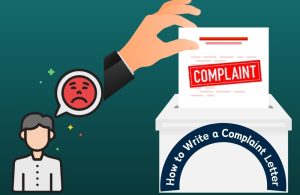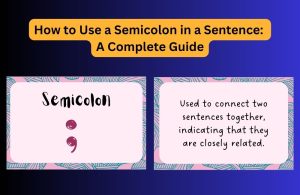Meeting minutes are a written record of the discussions, decisions, and actions that take place during a meeting. They serve as an official document that helps attendees to remember what was discussed and to keep track of the progress of the meeting’s objectives.
However, writing meeting minutes in English can be quite challenging, especially for non-native speakers. However, with a little bit of guidance and practice, you can master the art of taking and writing meeting minutes effectively. In this post, I will guide you on how to write good meeting minutes.
To write a meeting minute, use a standard format, record key points objectively, use proper grammar and spelling, and distribute minutes in a timely manner. You must listen actively, use headings and bullet points, identify action items, and check with the chairperson if unsure about anything.
You may try Fifty Ways to Practice Writing: Tips for ESL/EFL Students to practice and improve writing with pen and paper and typing. By applying these methods, you will write more, write faster, and write more correct and more interesting papers and letters.
Now, let me provide detailed guidance on how to prepare for a meeting. I’ll also give some essential tips and share best practices to help you create clear, accurate, and useful meeting minutes that will benefit your team.
Table of Contents
- Be Prepared for the Meeting
- Use a Standard Format
- Record the Key Points
- Be Objective
- Use Proper Grammar and Spelling
- Distribute Minutes in a Timely Manner
- In Conclusion
Be Prepared for the Meeting
Being prepared is key to having a successful meeting. By taking some time to prepare beforehand, you can ensure that you are ready to contribute and that you can effectively fulfill your role during the meeting. Here are some steps you can take to prepare effectively:
Familiarize Yourself with the Agenda
Reviewing the meeting agenda is essential to understanding what will be discussed during the meeting. Make sure that you have a clear understanding of the topics that will be covered and the order in which they will be presented. This will help you to prepare any materials you may need, such as reports, data, or presentations, and to anticipate any questions or comments that may arise.
Understand Your Role
It is important to know what is expected of you during the meeting. This could be anything from actively participating in the discussions to simply taking notes. Understanding your role will help you to prepare adequately and to ensure that you are making a valuable contribution to the meeting.
Prepare Your Equipment
Make sure that you have all the necessary equipment for taking notes, such as a laptop or notepad. If you are using a laptop, make sure that it is charged and in good working condition. You should also check that you have all the necessary software and applications installed and ready to use. If you are taking notes by hand, make sure that you have enough paper and pens or pencils.
Research and Gather Relevant Information
If there are any topics that you are not familiar with, take some time to research and gather relevant information beforehand. This could include reviewing previous meeting minutes, researching industry trends, or looking up information on the topic online. Having this background information will help you to participate in discussions more effectively and to ask informed questions.
Plan to Arrive Early
Arriving early will give you time to set up your equipment, review your notes, and get settled before the meeting begins. This will help you to be more focused and present during the meeting.
By taking these steps to prepare before the meeting, you can be confident that you are ready to contribute and that you can make the most of the meeting’s time.
Use a Standard Format
Using a standard format when writing meeting minutes is crucial. This will make it easier for people to read and understand the minutes. Here is a suggested format:
- Date and time of the meeting: Start by writing the date and time of the meeting at the top of the minutes.
- Names of attendees and absentees: List the names of all attendees, including those who were absent.
- Agenda items: Record each agenda item and its corresponding discussion points.
- Decisions made: Write down any decisions that were made during the meeting.
- Actions assigned: Record any actions that were assigned to individuals or groups.
- Next steps: Write down any next steps or follow-up actions that were discussed.
- Any other relevant information: Include any other relevant information, such as announcements or presentations.
Record the Key Points
Recording key points during a meeting is important to ensure that the information discussed is captured accurately and can be referred back to later. Here are some tips for recording key points effectively:
Focus on the most critical aspects of the discussion: It is impossible to capture every single detail discussed during a meeting. Instead, focus on the most critical aspects of the discussion that are relevant to the meeting’s goals and objectives. This includes any action items, decisions, or important information discussed.
Use clear and concise language when taking notes. This will make it easier for you to understand your own notes and for others to read and understand them if necessary. Avoid using lengthy sentences or unnecessary words that may confuse or clutter your notes.
Avoid using jargon or technical terms: If possible, avoid using jargon or technical terms that may be unfamiliar to others. This will ensure that your notes are easily understood by everyone who needs to read them. If you need to use technical terms, make sure to explain them in plain language so that everyone can understand them.
Use headings, bullet points, and numbering to organize your notes. This will make it easier to refer back to specific points later and to find the information you need quickly. Use different colors or highlighters to emphasize important points or to differentiate between different topics.
After the meeting, take some time to review and revise your notes. This will help you to ensure that the information is accurate and complete. Add any additional information that you may have missed during the meeting and clarify any points that may be unclear.
Be Objective
When writing meeting minutes, it is essential to be objective and impartial. Here are some tips for being objective:
- Stick to the facts: Stick to the facts and avoid adding personal opinions or biases.
- Use neutral language: Use neutral language that accurately reflects the discussions and decisions made during the meeting.
- Avoid making assumptions: Avoid making assumptions about what was said or meant. If you are unsure, ask for clarification.
Use Proper Grammar and Spelling
Using proper grammar and spelling is essential when writing meeting minutes. Proper grammar and spelling ensure that the minutes are clear, easy to understand, and convey professionalism. Here are some tips for using proper grammar and spelling in your meeting minutes:
1. Proofread Your Notes
After the meeting, take the time to proofread your notes before writing the final minutes. This will help you to identify any errors in grammar or spelling that may have occurred during the meeting. You can also correct any typos or misspellings that you may have missed while taking notes.
2. Use a Grammar Checker or Dictionary
If you are unsure about the spelling or grammar of a word, use a grammar checker or dictionary to verify your work. This can help you to avoid common spelling and grammar errors that may be missed during proofreading.
3. Be Consistent
Consistency is key when writing meeting minutes. Use consistent language and formatting throughout the minutes to ensure that they are easy to read and understand. This includes using the same tense, voice, and punctuation throughout the document.
4. Use Proper Punctuation
Proper punctuation is crucial in conveying the meaning of your sentences. Use commas, periods, and other punctuation marks correctly to ensure that your sentences are clear and easy to understand.
5. Avoid Using Slang or Informal Language
Meeting minutes should be written in a professional and formal tone. Avoid using slang, abbreviations, or other informal language that may be unclear or confusing.
Distribute Minutes in a Timely Manner
Distributing minutes in a timely manner is essential to ensure that everyone is on the same page and can take the necessary action points. Here are some tips for distributing minutes:
- Send the minutes promptly: Send the minutes to all attendees as soon as possible after the meeting.
- Include absentees: Be sure to send the minutes to everyone who attended the meeting, including those who were absent.
- Follow up: Follow up with attendees to ensure that they have received and read the minutes.
Remember! Taking and writing meeting minutes effectively requires preparation, a standard format, recording key points objectively, proper grammar and spelling, and timely distribution. By following these guidelines, you can create clear, accurate, and useful meeting minutes that will help attendees to remember what was discussed, understand the decisions made, and track progress toward the meeting’s objectives.
However, there are a few additional tips and best practices that can help you to write meeting minutes effectively. Here are some additional things to keep in mind:
- Listen actively: To take effective notes, it’s important to listen actively during the meeting. This means paying attention to what is being said and asking for clarification if necessary.
- Use headings and subheadings: Using headings and subheadings can help to organize your notes and make them easier to read.
- Use bullet points: Using bullet points can make your notes more concise and easier to read.
- Summarize discussions: If a discussion goes on for a long time, it may be helpful to summarize the main points at the end.
- Include action items: Make sure to clearly identify any action items that were assigned during the meeting, including who is responsible for them and when they are due.
- Be concise: Keep your meeting minutes concise and to the point. Avoid including unnecessary details or tangents.
- Check with the chairperson: If you’re unsure about anything, it’s a good idea to check with the chairperson or the person who led the meeting to ensure that your notes are accurate.
By incorporating these tips and best practices into your meeting minutes, you can create an effective and useful record of your meetings that will help your team to stay organized, focused, and productive.
In Conclusion
Writing meeting minutes is an essential skill for anyone who attends or leads meetings. By following the guidelines and best practices outlined in this article, you can create clear, accurate, and useful meeting minutes that will help your team to achieve its objectives.
Remember to prepare adequately, use a standard format, record key points objectively, use proper grammar and spelling, and distribute minutes in a timely manner. With practice and dedication, you can become an expert in taking and writing meeting minutes in English.





